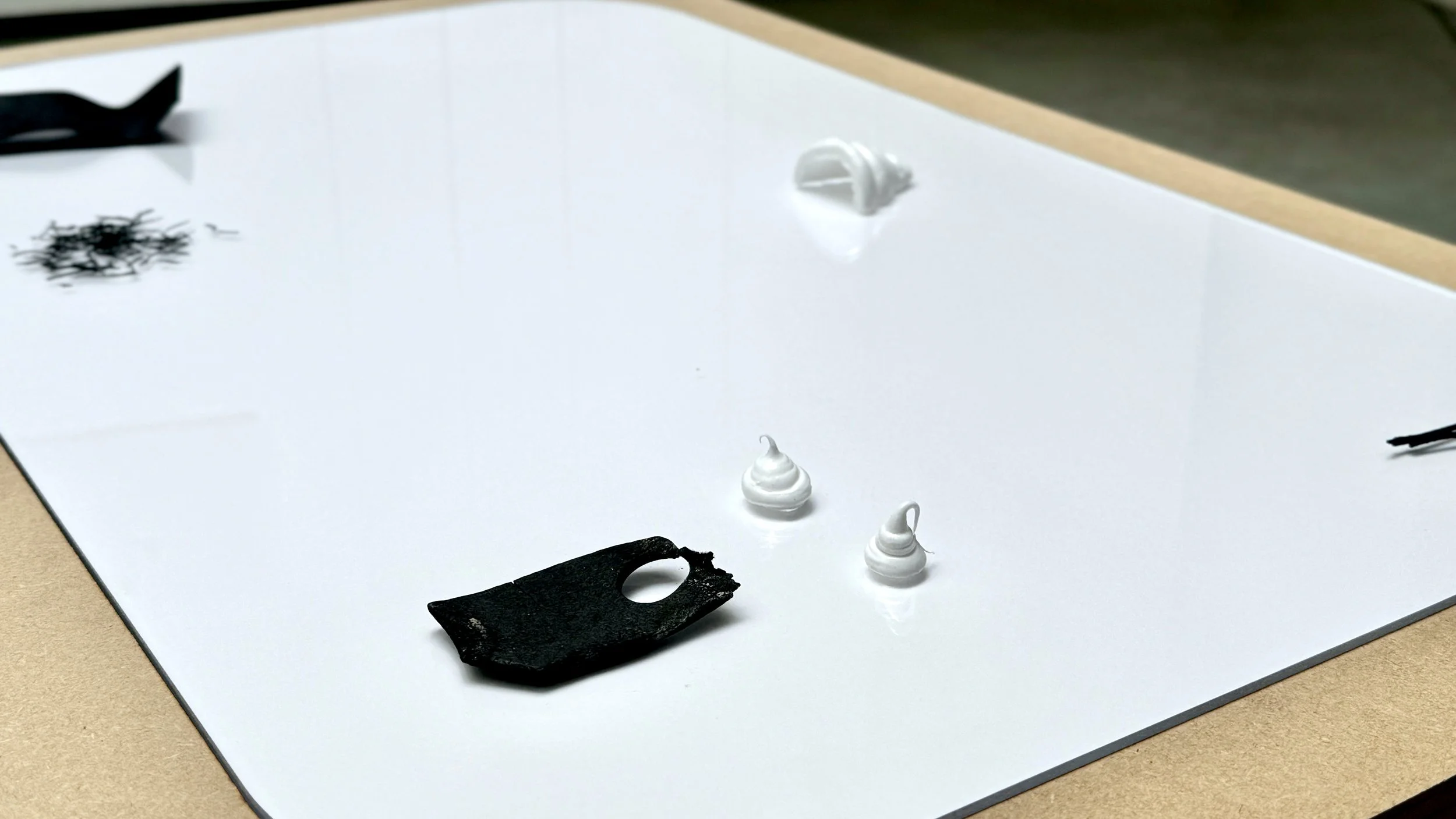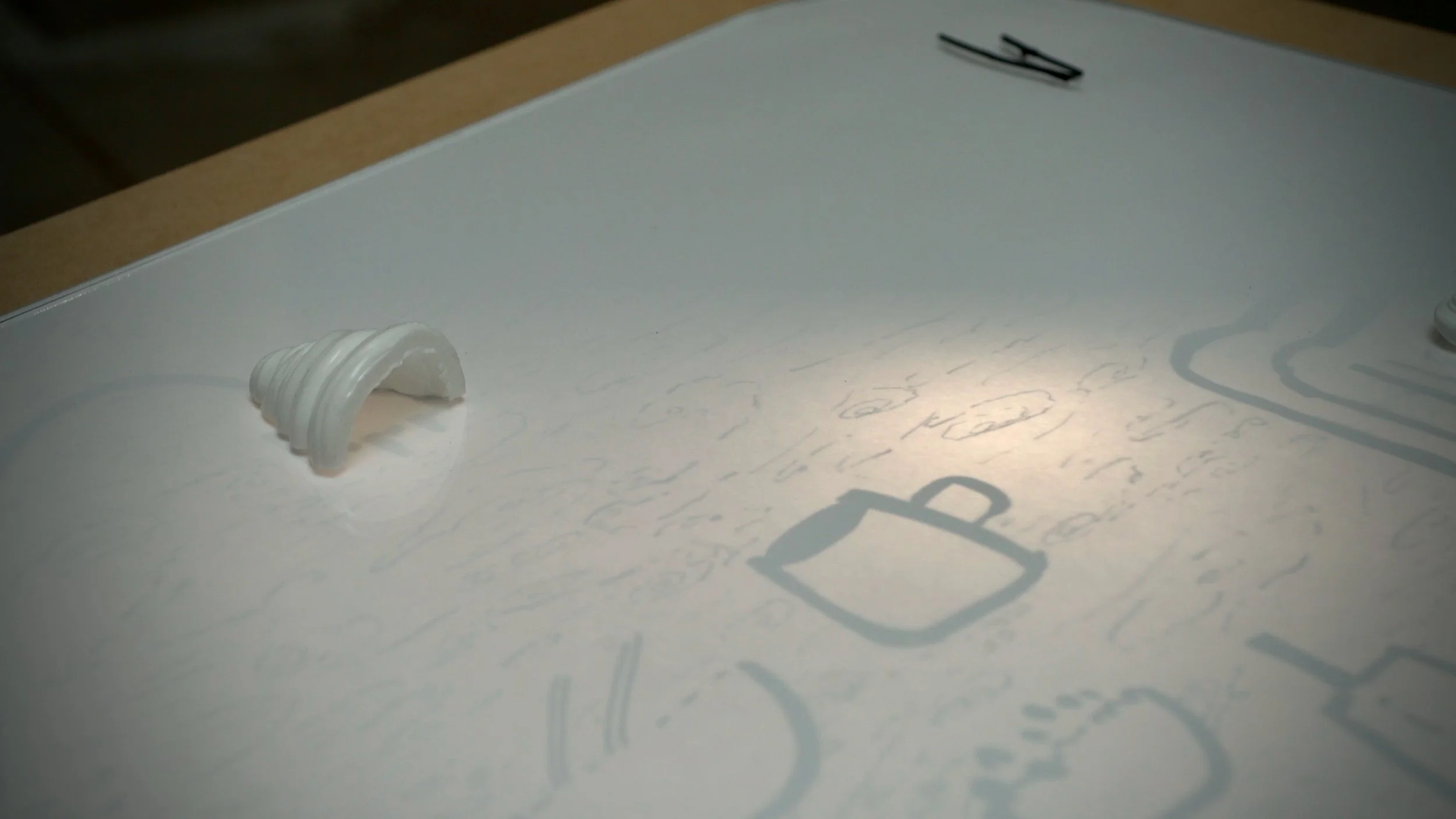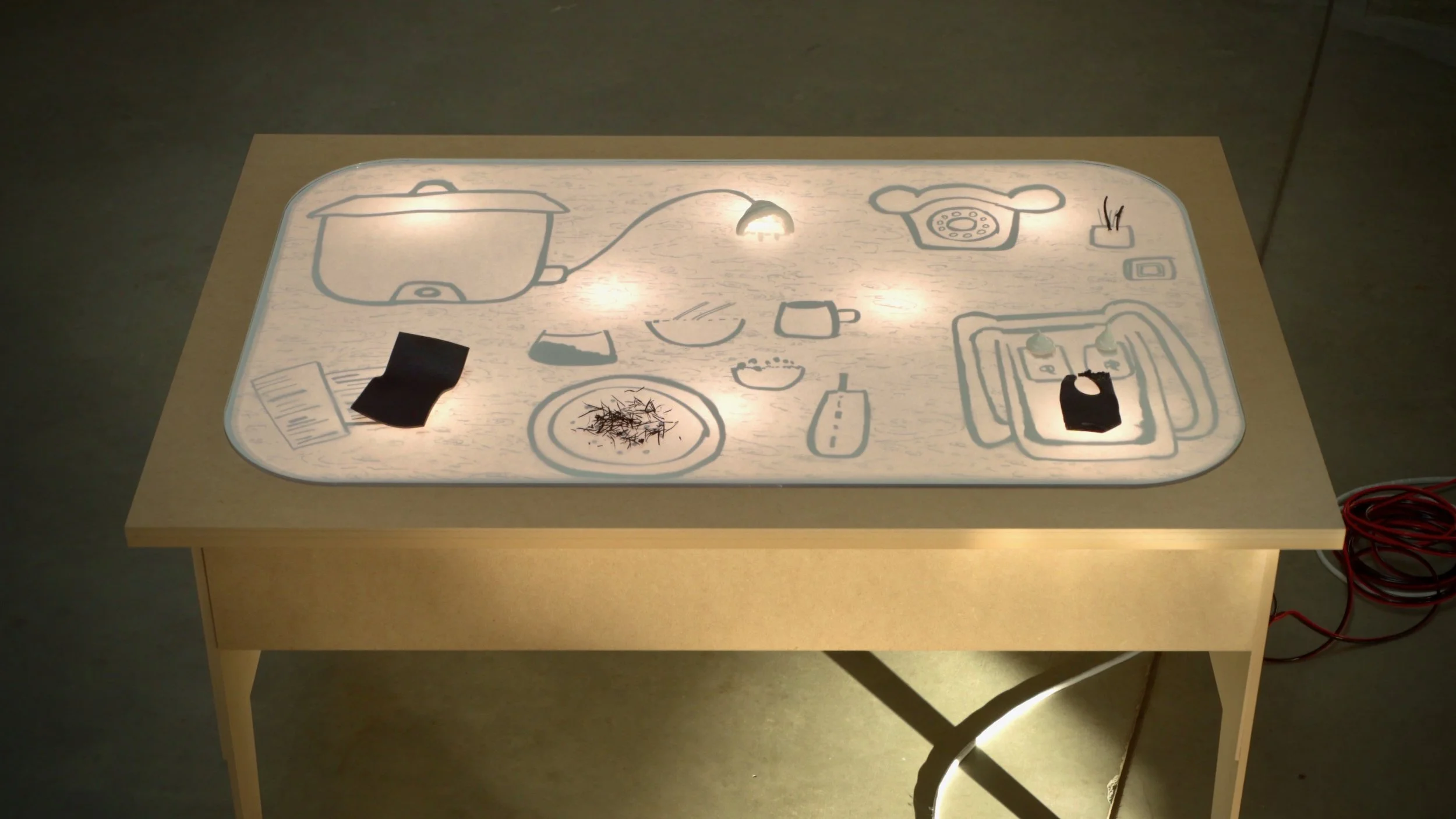Sound On
H O M E ≠ H•O•M•E
Drawing on Wan-Yi's personal history as a latchkey child from the age of six, this project explores the fine line between loneliness and solitude. Rooted in the Zen Buddhist concept “be a home for yourself,” the work examines how cultivating an inner sense of connection—independent of external circumstances—can transform loneliness into solitude.
The installation presents a fictional living room where automated controls orchestrate shifts between loneliness and solitude, creating distinct emotional states within the same space and furnishings. These shifts, expressed through the activation and deactivation of the installation components, act as a metaphor for a deeper transformation- from outward longing toward connection within.
The title, H O M E ≠ H•O•M•E, speaks to the project's essence. The open, expansive H O M E contrasts with the fragmented, mechanical H•O•M•E. Both solitude and loneliness arise from the experience of being alone, but their meanings differ depending on how we engage with that state. The title invites reflection on how "home," both as a physical space and a psychological concept, shapes and is shaped by our emotional states.
The installation challenges assumptions about home and connection. Is home a fixed place, or is it an internal condition? Can a space meant to comfort also isolate? H O M E ≠ H•O•M•E invites contemplation, exploring how 'home' doesn’t have to be a fixed place but can be an evolving process of inner connection.
Installation Framework and Credits follow below.
Installation Framework
Automation Cycle:
On: 170 seconds (including music: 100 seconds)
Off: 150 seconds
Conceptual Framework:
Zen Buddhism teaches the practice of using breath to bring attention back to the body, making it a home. This project explores how spatial experience can similarly anchor awareness in the body.
We turn to sacred architectural elements—geometry, verticality, and horizon—to observe how the body responds, using this awareness to draw attention back to itself. To create an expansive interior, we implement:
Vertical columns of varying heights and widths to create an optical illusion of depth.
A large chandelier, inspired by sacred interior furnishings.
Delicate, translucent materials to evoke a sense of transcendence.
Perspective line drawings on the walls to extend space beyond its physical boundaries, fostering a sense of expansion.
Partial interior finishing to invite imagination and solitude, leaving room for personal interpretation and reflection.
Neutral-toned MDF for a fictional environment. Its monochrome surface captures light and shadow, highlighting an element of sacred spaces.
The automation that activates the environment unfolds Wan-Yi's narrative of coming home as a latchkey child. The rotation of the chandelier requires ample space, reflecting the abundant emptiness surrounding the child. The choice of the double bass conveys the deep cry the child used to have before learning to transform loneliness into solitude.
Adaptability:
All installation components are stand-alone and adaptable to different spaces. They can be disassembled for transportation.
Credits
Musician | Double Bassist: Emillie Kuo 郭馥玫
Instrumental Music: Longing for Your Return (望你早歸), a poignant Taiwanese folk song written during WWII, reflecting the longing of families separated by war.
Automation Design and Controls: Wan-Yi Lin with the assistance of ChatGPT
Mechanical Design and Advanced Woodworking: Roger Chen
Videography and Editing: Roger Chen
Funding: Canada Council for the Arts, BC Arts Council







